My interest in outdoor portable radio operating started last year and has only grown since then, with my 20th portable outing today and many more planned for this year. With that in mind, it was time to update some of my equipment to make life easier.
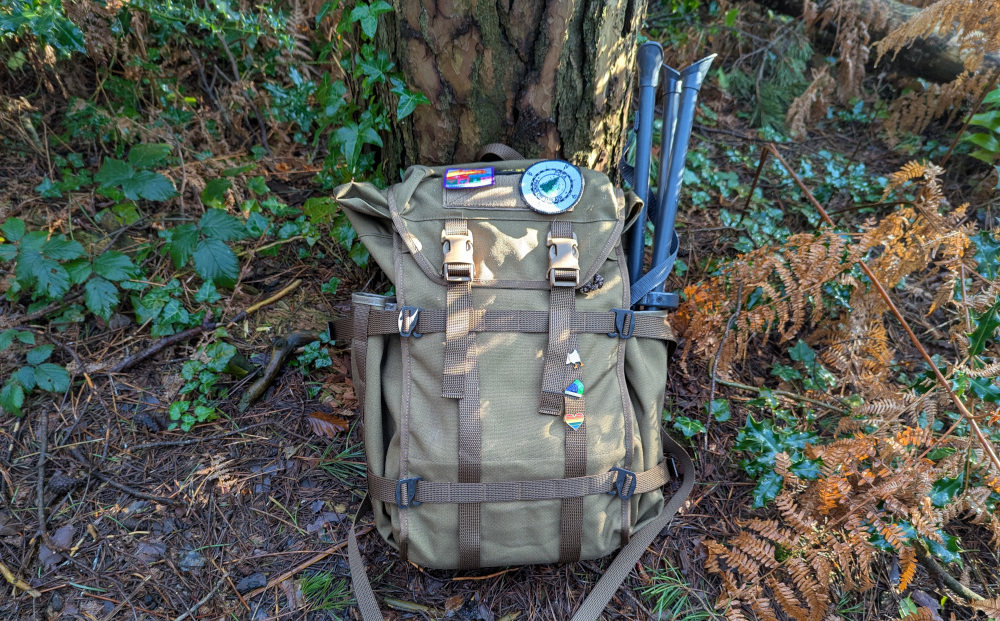
The actual radio and antennas haven’t changed; I am still taking my Yaesu FT-891 and either the JPC-12 vertical or Sotabeams Band Hopper dipole depending on whether I have a second person with me. But I’m now more frequently heading out by myself and in less pleasant weather, so I have made some improvements to the rest of the kit with that in mind.
My primary goals were:
- A new backpack dedicated to the role, so I didn’t have to swap my work stuff and radio stuff around in my single bag
- A smaller and lighter camp seat, so I wouldn’t have to hike with it in my hand
- A better solution for protecting the battery than bubble wrap.
As a stretch goal, I also wanted the ability to strap the radio securely inside the bag, and operate without removing it. Previously I had been protecting it in a knock-off Peli case, which was very safe but did mean I had to unpack quite thoroughly to operate. With more rainy activations, plus a planned 5-park POTA rove on foot coming up later in the year, I wanted a setup where I could do the minimum of setup and pack-down.
The Bag
My previous bag, a North Face Borealis, was good but very slightly too small, and as mentioned above it was also my work bag so I was forever swapping kit back and forth.
I deliberated for months about what to buy, coming up with a list of over 20 potentials. A few had internal straps that might have met my stretch goal, but really were for securing clothes rather than a heavy radio. From a mixture of hiking bags, military bags, good-looking technical bags from names I didn’t recognise, and gambles on commuter bags that might have been flimsy, I eventually settled on a Savotta Kahakka 25L pack after a tip-off from Peter DL6PL. This was definitely on the expensive side, but ticked all the boxes for me—no complex bits, no laptop pouches, just a boxy pack of the right size that looked like it could take some abuse.
I’m ashamed to say I conceded to the trope—that velcro patch looked sad when it was empty, so I bought the inevitable patches for it. In the interests of trying not to look too much like a military LARPer, I stuck my Scouts badge from JOTA on there too. If that doesn’t put off the worse variety of wannabe soldier, the rainbow heart pin badge should do the trick.
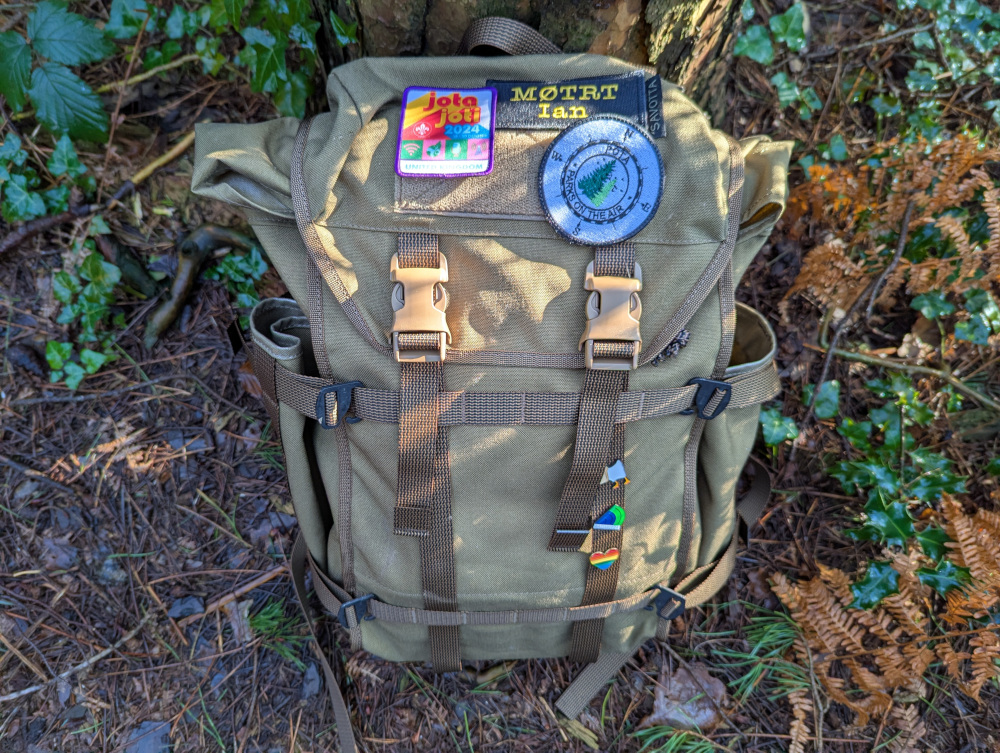
The Extras
For our two-person or family activations in the summer, I brought our picnic blanket, but in the autumn and winter when I had been more often going solo, I switched to a camp chair. While more comfortable, it’s very bulky and I had no way of attaching it to my old bag, so I had to hike with it in hand. While the new bag does have better straps and could probably take it without too much hassle, I wanted to try one of the smaller tripod-style seats. I settled for a Quechua Camping Tripod and it works pretty well, collapsing down well enough to sit comfortably in the side pocket of the bag.
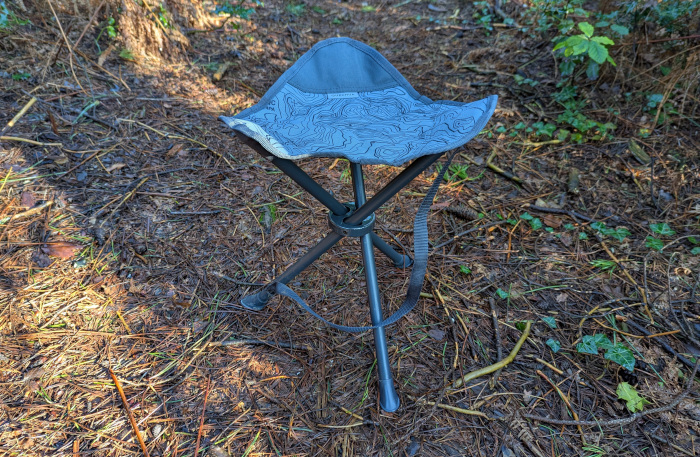
To replace the bubble wrap protecting the battery, just I found a camera bag that was almost exactly the same size. Not sure why I didn’t think of that earlier!
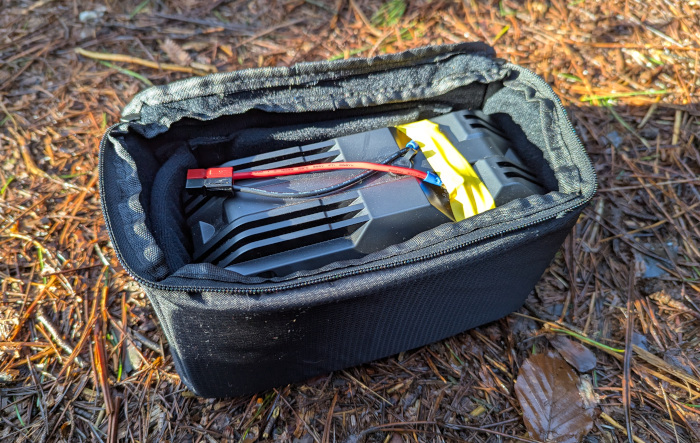
The Internal Radio Fit
I did end up finding a solution to operate the radio from inside the bag, but I will caveat this one—it’s pretty hacky, not quite as protected as I’d like, and I need to do some more thorough testing of how the radio handles the restricted airflow. But hey, this hobby is called amateur radio for a reason.
I bought some 3D-printed side rails for the FT-891 to give it at least some protection if I was going to hike with it outside of its Peli case. I then used some paracord to tie the rails to the three hooks that the bag has for a water bladder or other equipment in the rear pouch, sitting the radio at the right level to expose the buttons.
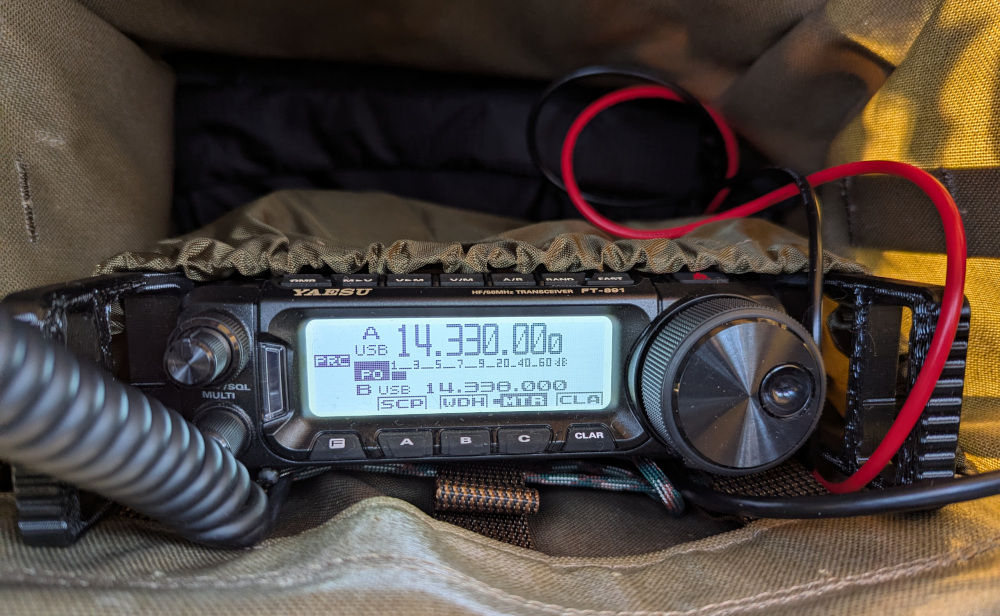
For power I wired up an additional 30cm or so of power cable so that the battery can be disconnected and reconnected from the radio at the top of the bag. I also used a 1m coax extension from the radio to the water pipe/cable hole in the side of the bag. (The product page even mentions using this for antenna cables, so why not?) This allows the bag to be closed for rain showers with only the microphone and the coax emerging (until you need to adjust the radio, anyway).

For better weather, the radio can be operated from the bag in front of me while sat on the camp chair, so tentatively it looks like an end to balancing the radio on my leg during POTA activations.
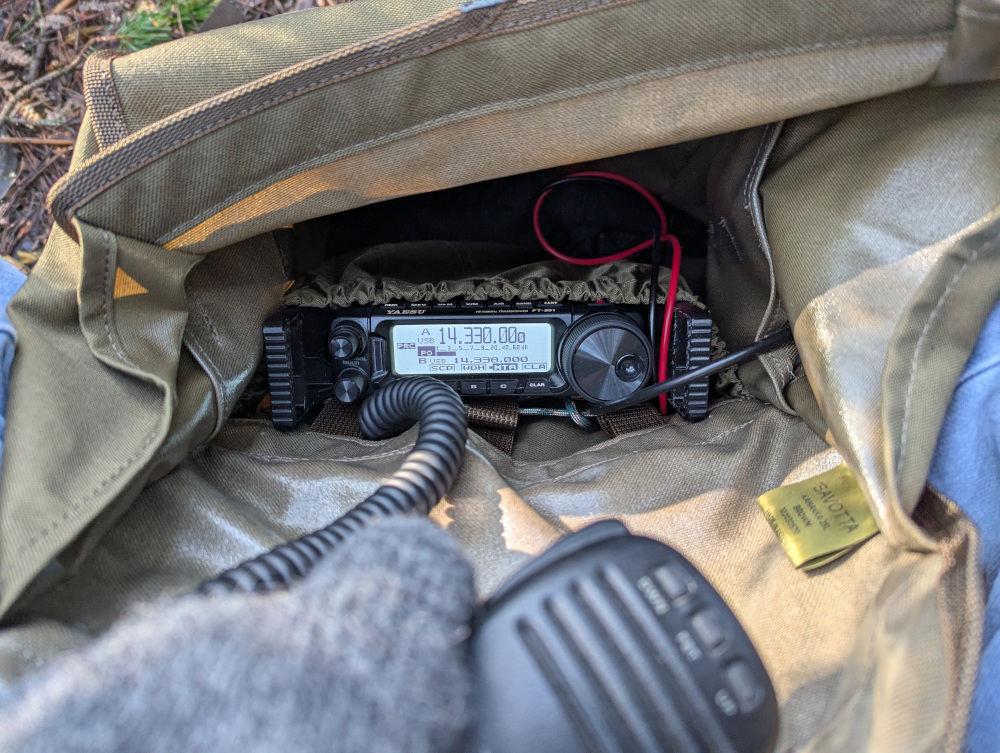
That’s all for now. I have plans brewing for an ultra-portable QRP setup that I can take anywhere, but having already spent this year’s POTA budget, that will have to wait!
Comments